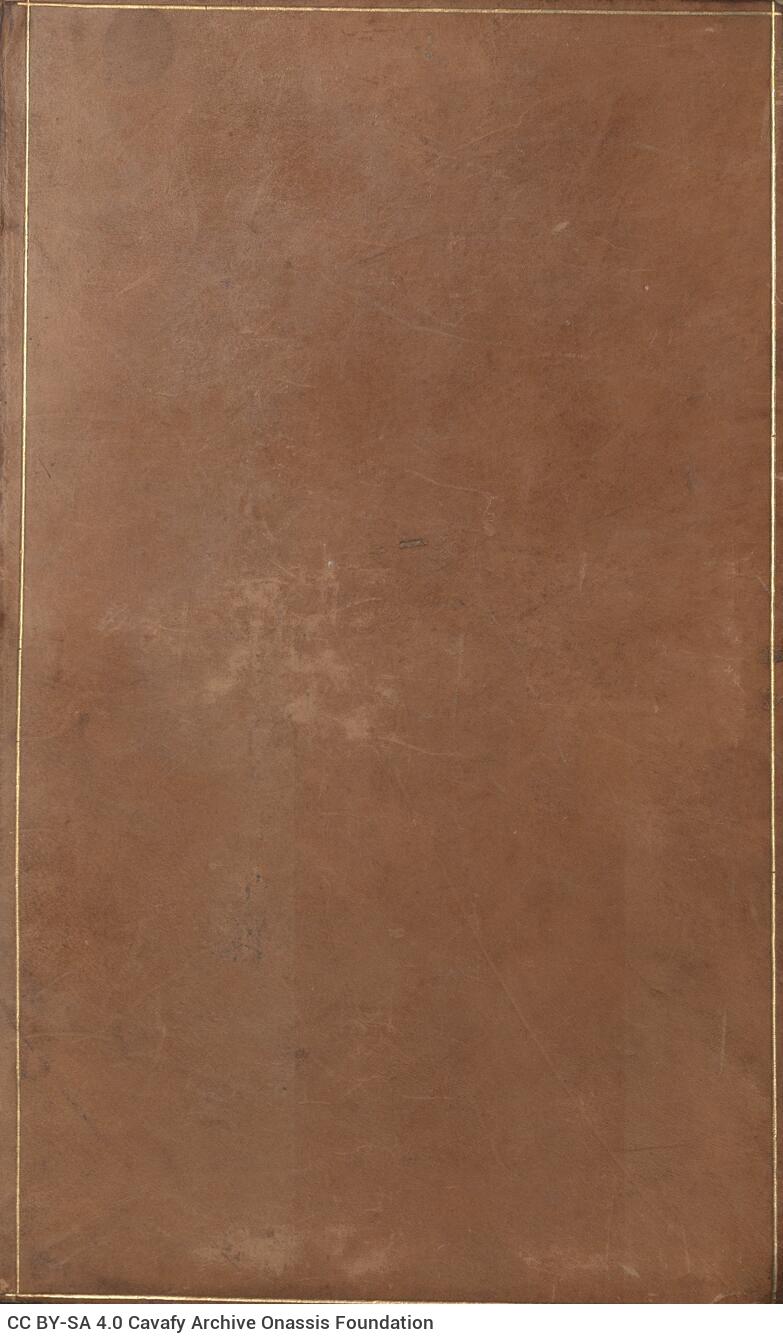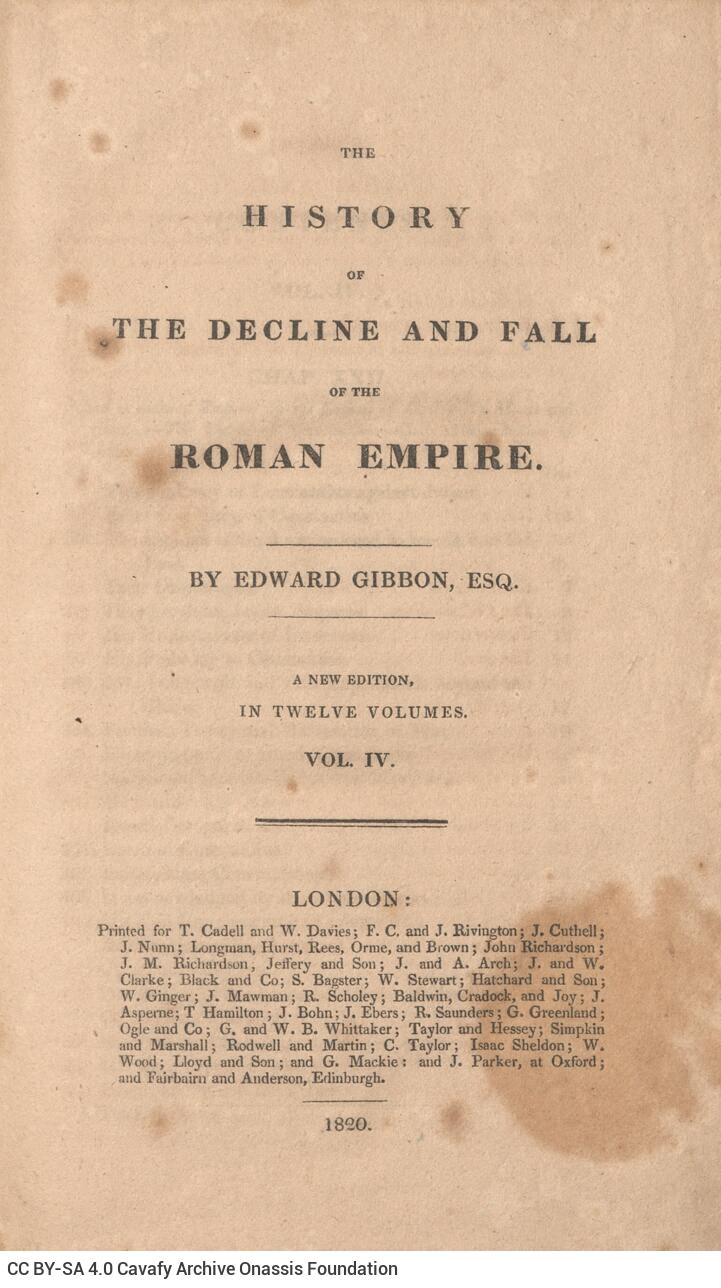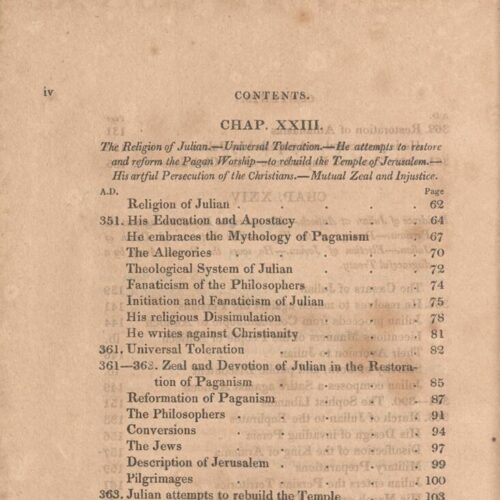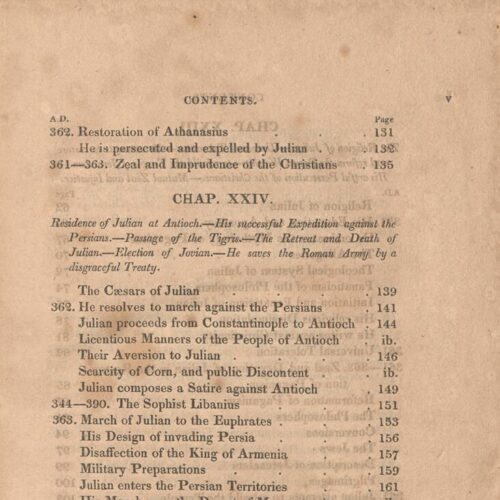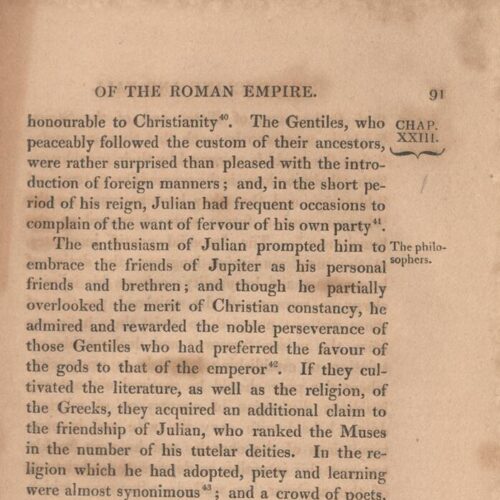Gibbon, Edward. The History of the Decline and Fall of the Roman Empire. Vol. IV. London, Printed for T. Cadell and W. Davies […], 1820
LIBRARY: GR-OF CA CL.7.47
INSTRUCTIONS ON THE MARKING OF TRANSCRIPTIONS
X
Markings of written text
deletions with pencil or ink regarding handwritten text:
deletion
underlining
underlining
Markings of printed text
deletions with pencil or ink regarding printed text:
deletion
underlining
underlining
Handwritten notes on printed text
handwritten notes, additions, afterthoughts with pencil or ink that interact with the printed text:
green fonts
green fonts
Printed text
printed text of a given item which interacts with the handwritten notes:
yellow fonts
yellow fonts
Illegible/vague text
written text with pencil or ink that is vague or illegible:
red fonts
red fonts
DIGITAL OBJECT DESCRIPTION
- CAVAFY LIBRARY
REFERENCE CODE:
Records the unique identifier that has been appointed to the unit of description, in order to facilitate the exchange of information on an international level.
GR-OF CA CL.7.47
TITLE:
The accurate and full title of the item.
The History of the Decline and Fall of the Roman Empire
AUTHOR:
Identifies the name of the author, as referenced in the item.
Gibbon, Edward
PUBLISHER:
Identifies the name of the publisher, as referenced in the item.
T. Cadell and W. Davies, F. C. and J. Rivington, J. Cuthell, J. Nunn, Longman, Hurst, Rees, Orme and Brown, John Richardson, J. M. Richardson, Jeffery and Son, J. and A. Arch, J. and W. Clarke, Black and Co, S. Bagster, W. Stewart, Hatchard and Son, W. Ginger, J. Mawman, R. Scholey, Baldwin, Cradock and Joy, J. Asperne, T. Hamilton, J. Bohn, J. Ebers, R. Saunders, G. Greenland, Olge and Co, G. and W. B. Whittaker, Taylor and Hessey, Simpkin and Marshall, Rodwell and Martin, C. Taylor, Isaac Sheldon, W. Wood, Lloyd and Son, G. Mackie and J. Parker, Fairbairn and Anderson
PUBLICATION YEAR:
Records the date of publication of the item.
1820
PUBLICATION PLACE:
Records the place of publication, in its current form.
FORMAT:
Specifies the format of a given item. Further typological classification has been avoided due to the heterogeneity of the items and the difficulty to define them.
LANGUAGE:
Identifies the language(s) in which the content of the item was written.
English
DESCRIPTION:
The bibliographical description of each item, recording the description of the pages in each book and describing the endsheets at the front and back, following the standard of the “Bibliology Workshop Philippos Iliou”.
22 x 13.5 cm; 4 s.p. + IX p. + 443 p. + 5 s.p. + 2 inserts, label with the name of the former owner on verso of the front cover: “Mr. Thomas Bell”. On l. 1 bookplate CPC on recto, p. [Ι] title page, p. [ΙΙ] typographical data and p. [III]-VIII “Contents”. Pencil marks on p. 90, 91, 112, 225, 249. C. P. Cavafy’s handwritten notes in black ink inserted between p. 112-113 and 248-249 regarding traits of the text, where he signs as “C.”. Reading trace with pencil on p. 413. P. 443 colophon.
BOOKPLATE/ΕX LIBRIS:
Records the bookplate, as it appears in the item.
CPC
Thomas Bell
FORMER OWNER:
Identifies the name of the item’s former holder.
Bell, Thomas
READING TRACES:
Record whether or not there are reading traces inside the item.
INSERT:
Identifies the type of insert found in a given item.
BIBLIOGRAPHY:
Reference to relevant bibliography, where necessary.
The inserts and handwritten notes found in Edward Gibbon’s volumes were transcribed for the first time by Diana Haas. See Diana Haas, “Cavafy’s reading notes on Gibbon’s ‘Decline and Fall”, Folia Neohellenica 4 (1982), 25-96.
CONDITIONS GOVERNING REPRODUCTION:
Specifies the conditions governing the reproduction of the description unit.
ACCESS POINTS
Key-words aiming to facilitate searching for information within the library.
SUBJECT:
Identifies the wider theme to which a given item belongs.
RELATED TOPICS:
Identifies the thematic/typological traits of a given item.
Metadata in machine-readable format
DOI: 10.26256/7.47
C.P. CAVAFY LIBRARY:
Books in English
Previous book - The History of the Decline and Fall of the Roman Empire
Next book - The History of the Decline and Fall of the Roman Empire
